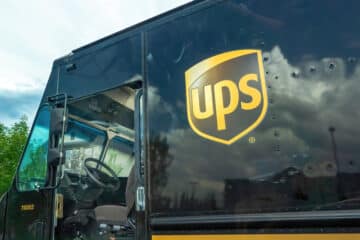

Amazon is Meeting Delivery Demand with Carnival Tents
As total package volume has surged over the past couple of years, Amazon (NASDAQ:AMZN) has been racing to keep up with demand. The company’s latest strategic move? Erecting massive carnival tents to serve as delivery hubs throughout the country. Employing nearly 300 people and standing up to 35 feet tall with over 18,000 square feet inside, each of these tents is enormous. If you live in a rural area somewhere around Tennessee, Idaho, Kentucky, South Carolina, Arkansas, Georgia, Colorado, or Louisiana, you might even see one!
Why Carnival Tents?
Most of Amazon’s delivery stations across the United States are within traditional buildings. However, Amazon began erecting the tents in 2018 as part of the company’s campaign to expand its last-mile logistics network. As part of the same campaign, Amazon has also begun working with private delivery service partners to hire and manage teams of full-time drivers. By using carnival tents as “modular delivery stations” (as the company calls them), Amazon can stay nimble and meet the growing demands of customers all across the country. After Amazon employees sort packages inside of the tents, delivery drivers load them into their vehicles to drop them off at their destinations.
The process is simple, and it’s working. Still, some people are scratching their heads, wondering why such a massive corporation would resort to something as basic as operating out of a carnival tent. Amazon is one of the biggest companies—if not the biggest—in the entire world. It’s not like they don’t have the resources to erect buildings or find more permanent structures. However, the real issue here is about speed. Carnival tents are quick to set up, and when it comes to the company’s delivery timetables, speed is the name of the game.
The Economic Benefits of Carnival Tents
Objectively speaking, there are a slew of reasons why tents make sense for Amazon. Number one, the tents can be set up extremely quickly. This lack of construction time allows Amazon to quickly launch in areas where it doesn’t yet have a permanent building.
In addition to being quick to construct, the tents have lots of other perks. They require no property taxes and little to no maintenance, making them easy to look after. The tents also help Amazon save on energy costs due to the natural light that shines through the fabric. All in all, they may not be the most aesthetically pleasing structures, but Amazon’s carnival tents certainly serve a purpose.
Amazon’s Carnival Tents Also Come With A Lot of Problems
While Amazon’s tents do have their benefits, it’s not all rainbows and butterflies inside of the modular delivery stations. For starters, they aren’t exactly cheap to build. In fact, each tent costs about $600,000 to construct, according to the Memphis Daily News.
Weather exposure is also a huge drawback, and workers inside the tents are forced to use external bathrooms in nearby trailers.
Jim Gilton, an Amazon Flex employee who works out of one of the tents in Colorado Springs, commented on the tent’s conditions during the cold season.
“There was very little heat over the winter,” he said. Gilton also noted that space heaters were used to try and keep people warm, to no avail.
The Tents Are Only Temporary Solutions
Despite the tents’ benefits and drawbacks, it should be noted that they are are simply temporary solutions. Amazon will continue operating out of the tents while the company builds out or secures more permanent delivery center locations. For now, the company certainly needs every advantage as eCommerce continues to explode in popularity across the nation.


Be the first to comment!